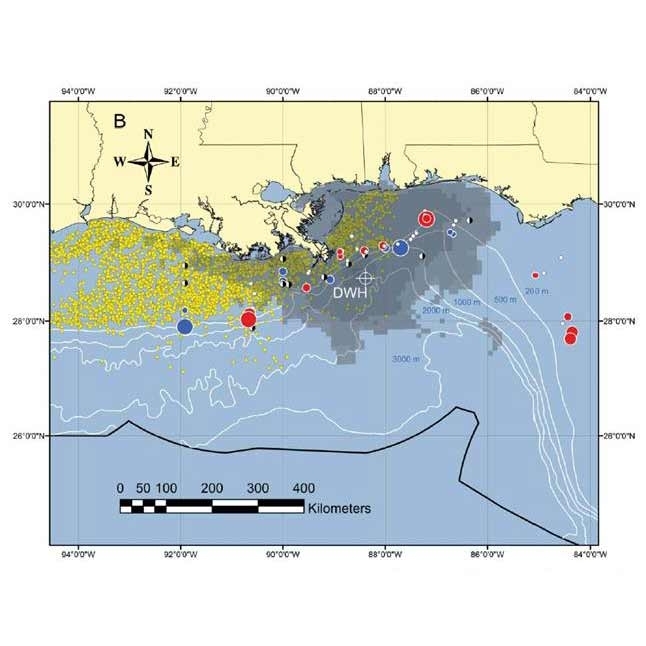
External skin lesions and PAH in fish
Prevalence of External Skin lesions and Polycyclic Aromatic Hydrocarbon Concentrations in the Gulf of Mexico Fishes, Post-Deepwater Horizon
Abstract: We surveyed offshore fish populations in the Gulf of Mexico in 2011 and 2012, following persistent reports of abnormal skin lesions and other pathologies in the aftermath of the Deepwater Horizon oil spill. The incidence of skin lesions in 2011 sampling was most frequent in some bottom-dwelling species along the continental shelf edge north of the Deepwater Horizon site. Longline surveys revealed that by 2012 the overall frequency of lesions in northern Gulf of Mexico (NGM) fishes in the vicinity of the Deepwater Horizon had declined 53%, with severity also declining. Relatively high concentrations of polycyclic aromatic hydrocarbon (PAH) metabolites (up to 470,000 ng naphthalene equivalents/g bile wet weight), indicative of oil-related pollution, were found in fish bile in 2011; concentrations of summed PAHs measured in fish liver and muscle were relatively low (<35 ng/g) due to the efficient metabolism of these compounds in teleost fish. Signifcant declines in bile concentrations of naphthalene and phenanthrene metabolites in Red Snapper Lutjanus campechanus between 2011 and 2012 indicate an episodic exposure to elevated levels of hydrocarbons of petrogenic origin. The composition of PAH parent compounds and alkylated homologs in Red Snapper liver samples was highly correlated with oil collected at the Deepwater Horizon wellhead but was less coherent with other PAH sources in the NGM. The elevated 2011 prevalence of skin lesions in some NGM species was unrelated to surface salinity or temperature anomalies and was not the result of an epizootic observable in our histopathology samples but was positively correlated with PAH concentration. Thus, we fail to reject the null hypothesis that elevated skin lesion frequency is unrelated to PAH exposure from the Deepwater Horizon oil spill.


